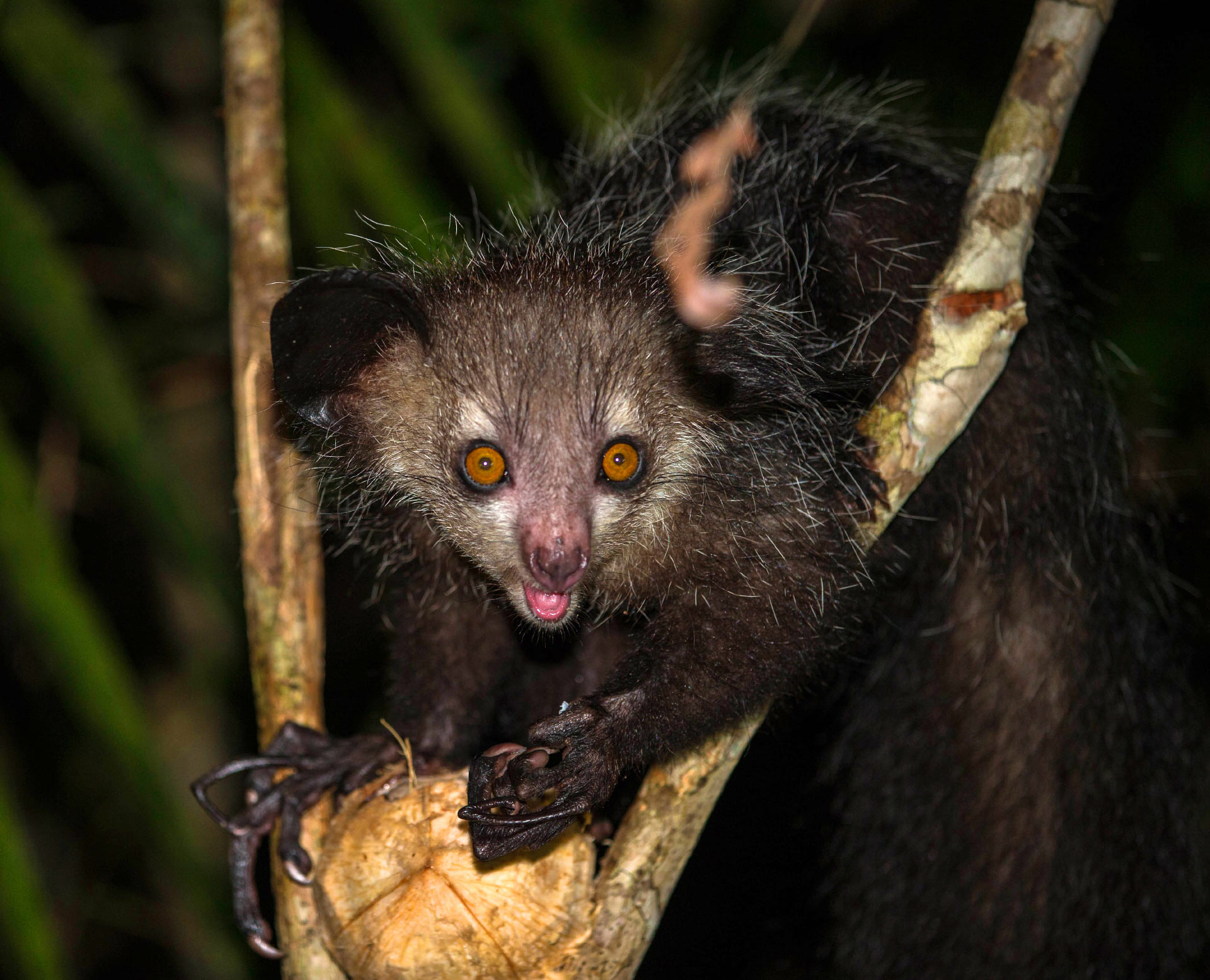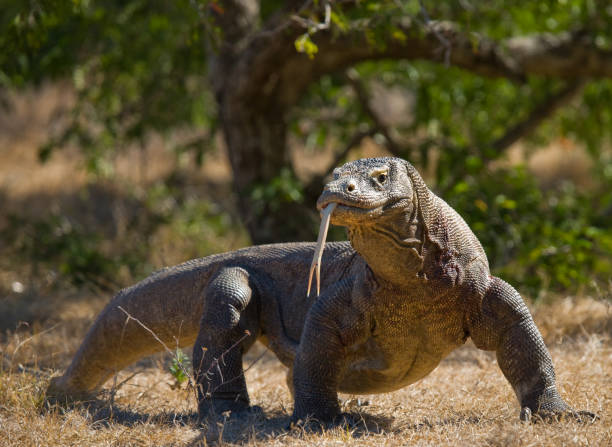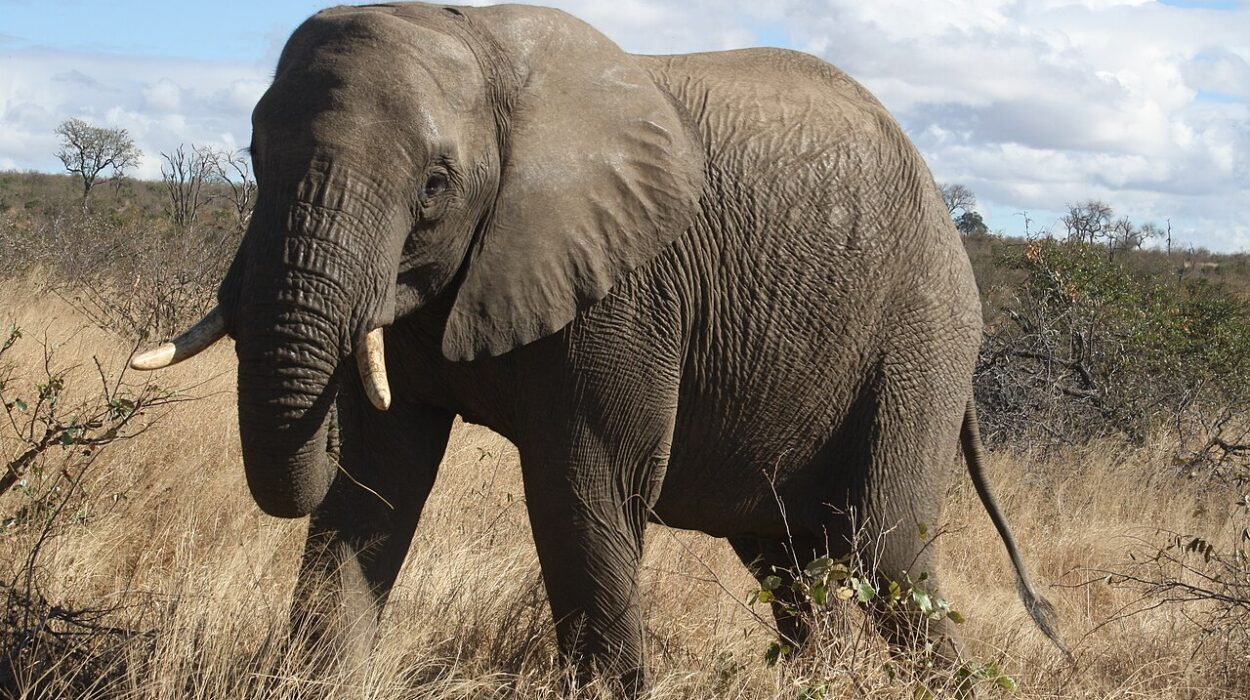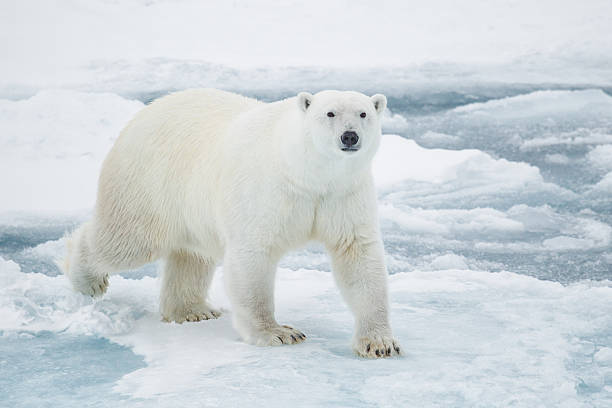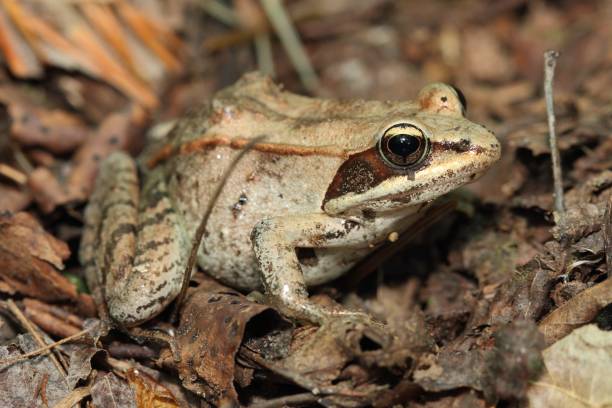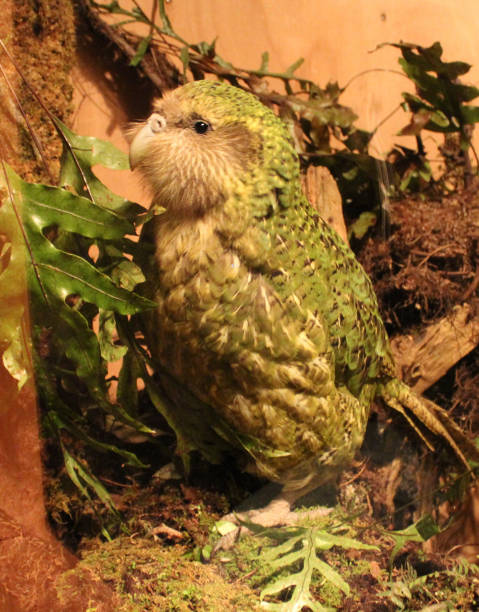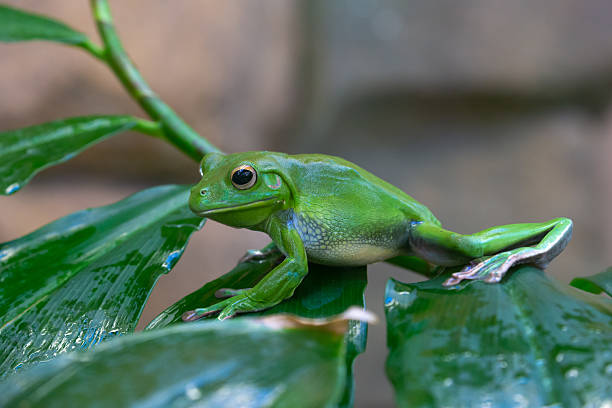The animal kingdom is full of wonders, but few creatures are as endlessly fascinating as mammals. We know the familiar ones—dogs, cats, elephants, and humans—but beyond these well-known faces lies a hidden world of evolutionary oddities. These mammals defy expectation and challenge our ideas of what it means to be “normal.” Some look like they were stitched together from leftover parts of other animals. Others behave so strangely that even seasoned scientists shake their heads in disbelief.
These animals remind us that evolution is not a neat, orderly process—it’s an artist, experimenting endlessly with form and function. Every weird mammal carries a story millions of years in the making, one that reveals not only the adaptability of life but also the sheer creativity of nature itself.
Here are ten of the weirdest, most wonderful mammals you’ve probably never seen—each one proof that reality can be far stranger than imagination.
1. The Aye-Aye – Madagascar’s Midnight Sorcerer
Deep in the rainforests of Madagascar, under the moonlit canopy, a pair of luminous eyes gleam through the darkness. Meet the aye-aye, a creature so bizarre that early European explorers thought it was a mythical demon. With its wiry fur, beady eyes, oversized ears, and eerily long middle finger, the aye-aye looks like a cross between a gremlin and a ghostly squirrel.
But this nocturnal lemur isn’t cursed—it’s brilliantly adapted. The aye-aye’s long, skeletal middle finger is a tool of precision. It taps on tree bark, listening for hollow sounds that indicate insect larvae within. Once it detects movement, it gnaws a hole with its ever-growing incisors—teeth more like a rodent’s than a primate’s—and inserts that long finger to fish out its prey.
This behavior, known as percussive foraging, is unique among primates and shows how evolution finds solutions in the strangest ways. The aye-aye’s lifestyle resembles that of a woodpecker, even though it’s a lemur—an incredible example of convergent evolution, where unrelated species evolve similar traits to solve similar problems.
Sadly, the aye-aye has long been misunderstood. In Malagasy folklore, it’s believed to bring death if it points its long finger at someone, leading villagers to kill it on sight. Yet this “bad omen” is a vital part of its ecosystem, controlling insect populations and maintaining the balance of the forest. The aye-aye reminds us that nature’s weirdness is never random—it’s always purposeful.
2. The Platypus – Nature’s Living Paradox
If the aye-aye is the forest’s phantom, the platypus is evolution’s punchline. When British scientists first received a preserved platypus specimen from Australia in the 18th century, they thought it was a hoax—a duck’s bill sewn onto a beaver’s body.
But the platypus is gloriously real and one of the strangest mammals on Earth. It has the bill and webbed feet of a duck, the tail of a beaver, the fur of an otter, and the ability to lay eggs like a reptile. And as if that weren’t enough, the male platypus has venomous spurs on its hind legs capable of delivering a painful sting.
Despite this Frankenstein-like design, every feature serves a function. The platypus hunts underwater using electroreception, detecting electric signals from the muscles of its prey—a trait more common in sharks than mammals. Its bill is a sensory powerhouse, packed with receptors that map the electric field of its surroundings.
A monotreme (egg-laying mammal) like its cousin, the echidna, the platypus stands as a living window into our evolutionary past. It blurs the line between reptile, bird, and mammal, reminding us that the story of life is not about perfection but possibility.
3. The Star-Nosed Mole – The Fastest Nose on Earth
If aliens ever visited Earth and wanted to blend in, they might take notes from the star-nosed mole. Found in the wetlands of North America, this small, blind creature sports twenty-two fleshy tentacles radiating from its snout, forming a structure that looks like a tiny, pink star.
It may look grotesque, but that “star” is one of the most sensitive organs in the animal kingdom. Each tentacle is packed with thousands of Eimer’s organs—microscopic touch sensors that allow the mole to detect the tiniest vibrations or textures.
The star-nosed mole is a master of speed. It can identify and decide whether an object is edible in less than 0.1 seconds—the fastest sensory decision process known in mammals. It hunts insects, worms, and small aquatic creatures, navigating and feeding entirely by touch.
What makes this even more remarkable is how evolution has compensated for its blindness. The mole’s entire world is mapped through touch, with its brain devoting more space to processing tactile input than visual data. Its nose, grotesque as it may seem, is a masterpiece of evolutionary engineering.
4. The Naked Mole-Rat – The Immortal Underground Empire
Beneath the arid soils of East Africa lives one of the strangest mammals on Earth: the naked mole-rat. With its wrinkled, hairless skin, buck teeth, and tunnel-digging claws, it looks like something out of a post-apocalyptic cartoon. Yet behind its odd appearance lies a biological marvel.
Naked mole-rats are eusocial mammals—like ants and bees. They live in colonies ruled by a single breeding queen, with workers and soldiers fulfilling strict social roles. This kind of hierarchical structure is almost unheard of among mammals.
But the naked mole-rat’s weirdness doesn’t end there. It’s virtually immune to cancer, resistant to pain, and can survive without oxygen for up to 18 minutes. Their cells don’t age in the same way ours do, which means they rarely die of old age. Scientists study them for insights into aging, cancer resistance, and even potential treatments for strokes.
Their underground lifestyle has shaped their physiology: they’re nearly blind, they regulate their body temperature like reptiles, and they communicate using over a dozen distinct chirps.
In the naked mole-rat, nature seems to have created the perfect experiment—a mammal that defies the rules of biology, thriving in darkness, age, and adversity.
5. The Saiga Antelope – The Time Traveler from the Ice Age
At first glance, the saiga antelope looks like a creature from another planet—or another time. With its swollen, bulbous nose and delicate frame, it seems too bizarre for the modern world. Yet this extraordinary animal once roamed across vast ice age steppes alongside mammoths.
Native to the grasslands of Central Asia, the saiga’s oversized nose is its defining feature. It acts as an air filter, warming and humidifying the cold, dusty air of its environment. During hot summers, the nose helps regulate body temperature.
Saigas migrate hundreds of miles each year, forming herds that once numbered in the millions. Tragically, poaching and disease have decimated their populations. In 2015, a mysterious bacterial outbreak killed over 200,000 saigas within weeks—a haunting reminder of how fragile our planet’s ecosystems can be.
But the saiga remains a symbol of resilience. Conservationists have helped its numbers slowly recover, and seeing one sprint across the Kazakh plains feels like witnessing a ghost of prehistory—a living fragment of a world long gone.
6. The Pangolin – The Scaly Guardian of the Forest
Few creatures embody quiet mystery like the pangolin. Covered head to tail in shimmering scales made of keratin—the same protein as our hair and nails—it looks more like a walking pinecone than a mammal.
Pangolins are the only fully scaled mammals on Earth. When threatened, they curl into a tight ball, their scales forming an impenetrable armor. Despite their medieval appearance, they are gentle insectivores, feeding mostly on ants and termites.
Their tongues are astonishingly long—so long, in fact, that they attach near the pelvis, extending deep into the throat when retracted. A pangolin’s tongue can be longer than its entire body, allowing it to reach deep into termite mounds.
Tragically, pangolins are also the most trafficked mammals in the world. Their scales are prized in traditional medicine, and their meat is considered a delicacy in some cultures. Conservationists are fighting to save them from extinction, driven by the hope that humanity can learn to protect, not destroy, the rarest treasures of evolution.
7. The Narwhal – The Unicorn of the Sea
In the frigid waters of the Arctic swims a creature that inspired centuries of myth: the narwhal, the real-life unicorn of the ocean. Its long, spiraling tusk can reach up to 10 feet in length, piercing the icy blue like a lance from legend.
For centuries, people believed narwhal tusks were the horns of unicorns with magical powers. In reality, the tusk is an elongated tooth—specifically, a left incisor—that grows straight through the whale’s upper lip.
Scientists now know that the tusk is packed with millions of nerve endings, making it an ultra-sensitive sensory organ. It can detect temperature, pressure, and even chemical changes in the water. Some research suggests narwhals use their tusks to sense the salinity of sea ice, guiding their migrations through the Arctic.
Narwhals are elusive and mysterious, diving deep beneath the ice and rarely surfacing near humans. They remind us how myth and science often intertwine—the magic we once imagined often hides truths even more extraordinary.
8. The Yeti Crab – The Deep-Sea Knitter
Far below the surface of the Pacific Ocean, near hydrothermal vents where boiling water gushes from the seafloor, lives one of the strangest creatures ever discovered: the Yeti Crab.
Though technically not a crab but a distant relative, it’s one of the weirdest “mammal-like” arthropods known for its bizarre, furry appearance—so much so that it looks like it’s wearing a white woolen coat. Scientists call it Kiwa hirsuta.
Its “hairy” arms are actually covered in bacteria, which the crab cultivates and “farms” for food. Living in complete darkness and extreme heat, the Yeti Crab survives in one of the harshest environments on Earth—an alien landscape of sulfuric smoke and molten minerals.
While not a true mammal, it deserves mention here because it represents the same evolutionary drive that defines the weirdest mammals: adaptation in defiance of all odds.
9. The Colugo – The Flying Ghost of the Forest
In the tropical forests of Southeast Asia, shadows glide silently from tree to tree. These are colugos, also known as flying lemurs—though they are neither true lemurs nor capable of powered flight.
Instead, colugos are the masters of gliding. Their bodies are draped in a thin membrane of skin stretching from neck to fingertips, toes, and even the tail, creating a natural wingsuit. They can glide up to 150 meters in a single leap, steering gracefully through the night.
Their huge eyes help them see in the dark, while their delicate claws let them cling to bark with precision. What makes colugos truly fascinating is their evolutionary significance—they’re considered the closest living relatives of primates, offering a glimpse into the early stages of our own lineage.
When a colugo sails through the moonlit jungle, it’s like watching a living spirit—part mammal, part myth, and entirely magnificent.
10. The Pink Fairy Armadillo – The Desert Dream
The pink fairy armadillo might be the most whimsical mammal alive. Barely five inches long, it looks like a tiny, blushing dragon wearing a rose-colored shell. Found in the sandy plains of Argentina, it’s the smallest species of armadillo—and one of the hardest to spot.
Its pale pink shell is flexible and connected to its body by a thin membrane, helping it regulate body temperature. Beneath the surface, its powerful claws make it an expert burrower—it “swims” through sand the way a fish moves through water.
The pink fairy armadillo’s reclusive nature has made it a near-mythical creature among biologists. It rarely survives long in captivity, suggesting it depends deeply on its unique underground world. Every glimpse of it is a reminder that beauty in nature often hides beneath our feet, fleeting and fragile.
The Genius of Evolution’s Oddities
What unites these bizarre mammals is not just their appearance but their adaptation. Each evolved to fill a specific niche—to thrive where others could not. From the blind mole’s tactile precision to the saiga’s prehistoric snout, these creatures prove that life is not bound by convention.
Every quirk of evolution tells a story of survival. The aye-aye’s ghostly hand, the pangolin’s armor, the naked mole-rat’s immortality—all are testaments to life’s refusal to conform.
The Lesson in Weirdness
When we encounter animals that seem strange, we are, in truth, looking at nature’s most daring experiments. They embody resilience, creativity, and the endless pursuit of balance in a chaotic world.
The weirdest mammals you’ve never seen are not mistakes—they are masterpieces. They remind us that beauty can be unsettling, that intelligence can wear many faces, and that life, in all its forms, is a miracle of imagination.
In their oddness, they reflect the universe’s own restless genius—ever curious, ever bold, and infinitely strange.
